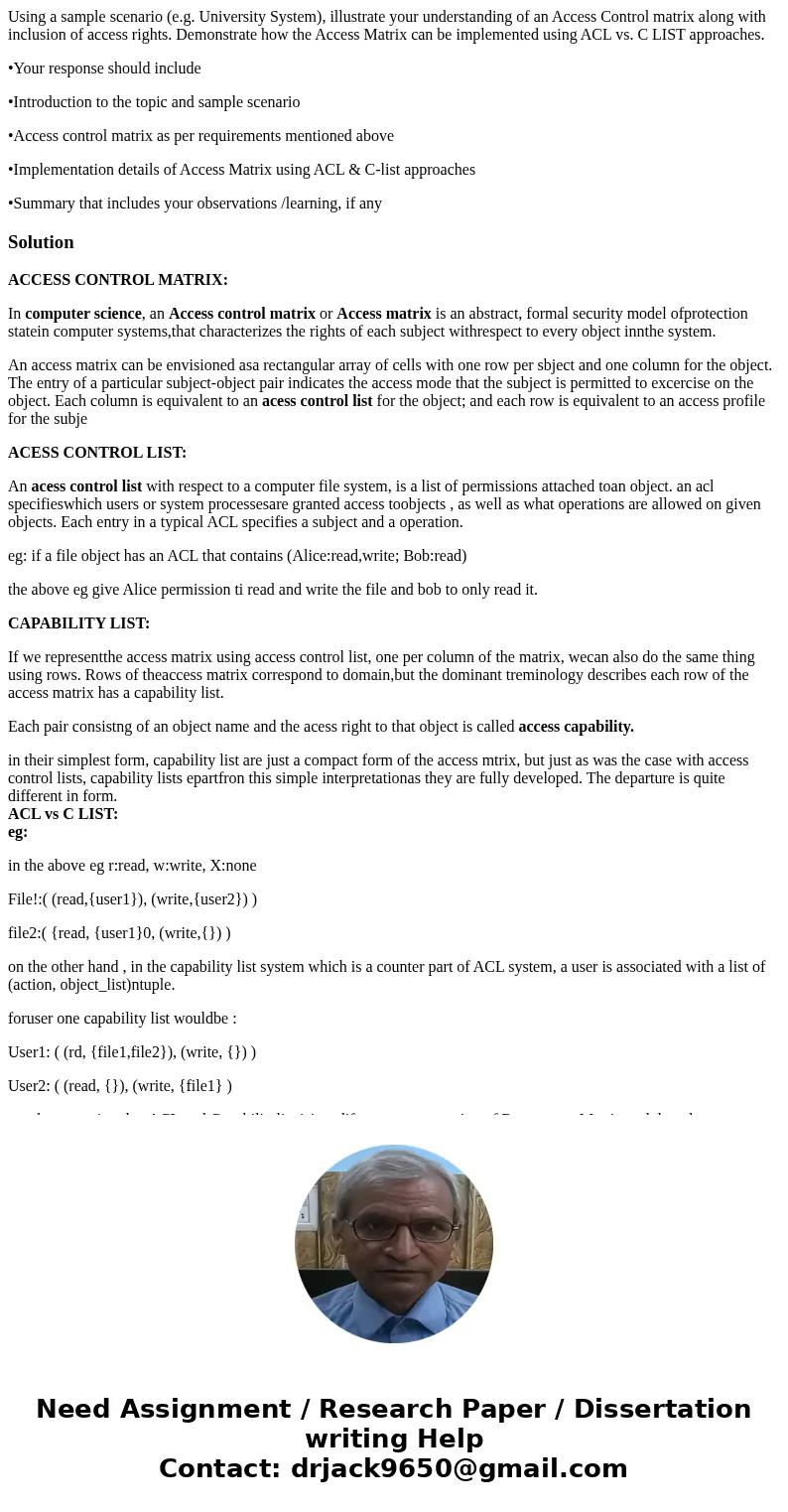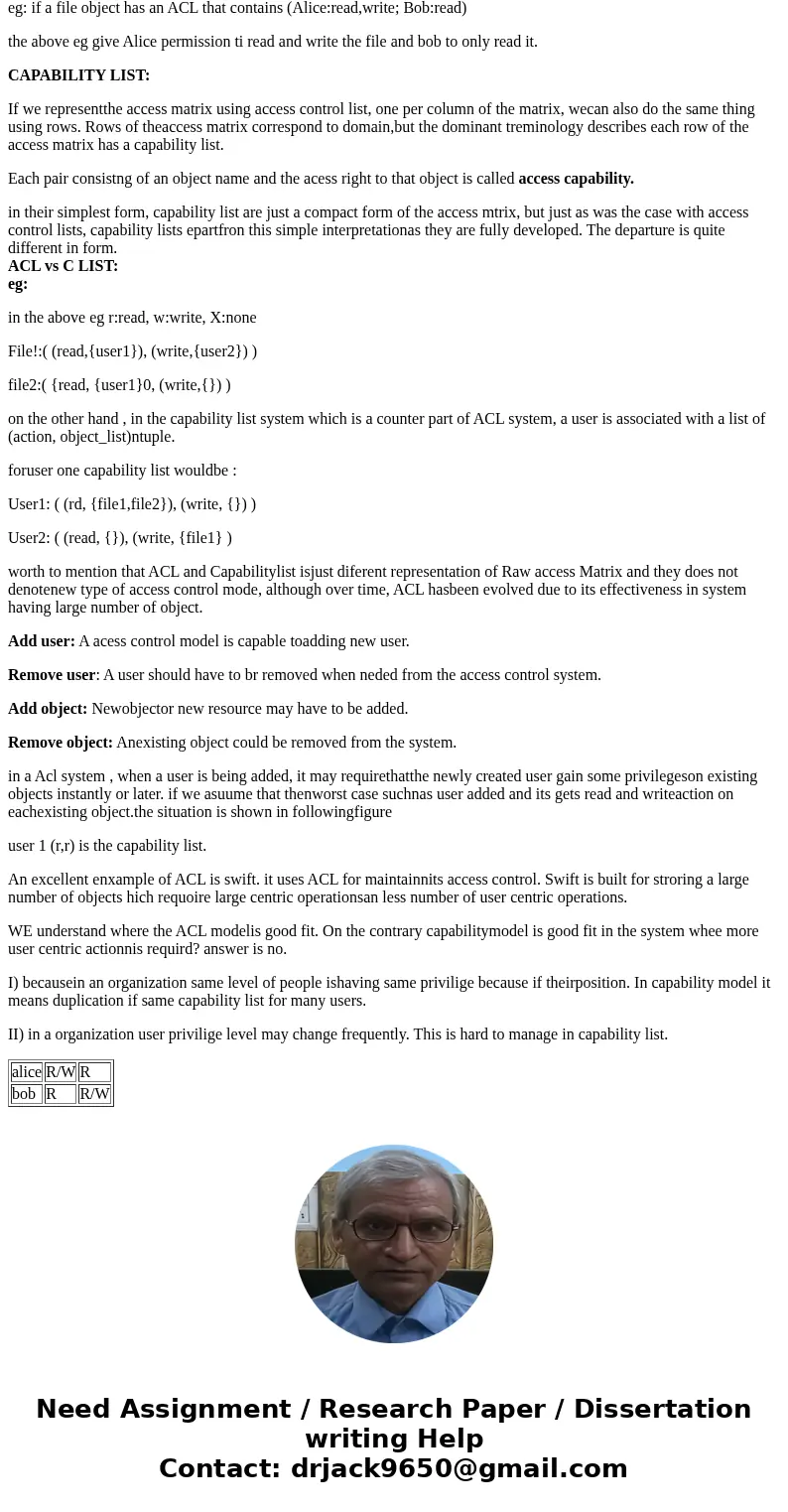Using a sample scenario eg University System illustrate your
Using a sample scenario (e.g. University System), illustrate your understanding of an Access Control matrix along with inclusion of access rights. Demonstrate how the Access Matrix can be implemented using ACL vs. C LIST approaches.
•Your response should include
•Introduction to the topic and sample scenario
•Access control matrix as per requirements mentioned above
•Implementation details of Access Matrix using ACL & C-list approaches
•Summary that includes your observations /learning, if any
Solution
ACCESS CONTROL MATRIX:
In computer science, an Access control matrix or Access matrix is an abstract, formal security model ofprotection statein computer systems,that characterizes the rights of each subject withrespect to every object innthe system.
An access matrix can be envisioned asa rectangular array of cells with one row per sbject and one column for the object. The entry of a particular subject-object pair indicates the access mode that the subject is permitted to excercise on the object. Each column is equivalent to an acess control list for the object; and each row is equivalent to an access profile for the subje
ACESS CONTROL LIST:
An acess control list with respect to a computer file system, is a list of permissions attached toan object. an acl specifieswhich users or system processesare granted access toobjects , as well as what operations are allowed on given objects. Each entry in a typical ACL specifies a subject and a operation.
eg: if a file object has an ACL that contains (Alice:read,write; Bob:read)
the above eg give Alice permission ti read and write the file and bob to only read it.
CAPABILITY LIST:
If we representthe access matrix using access control list, one per column of the matrix, wecan also do the same thing using rows. Rows of theaccess matrix correspond to domain,but the dominant treminology describes each row of the access matrix has a capability list.
Each pair consistng of an object name and the acess right to that object is called access capability.
in their simplest form, capability list are just a compact form of the access mtrix, but just as was the case with access control lists, capability lists epartfron this simple interpretationas they are fully developed. The departure is quite different in form.
ACL vs C LIST:
eg:
in the above eg r:read, w:write, X:none
File!:( (read,{user1}), (write,{user2}) )
file2:( {read, {user1}0, (write,{}) )
on the other hand , in the capability list system which is a counter part of ACL system, a user is associated with a list of (action, object_list)ntuple.
foruser one capability list wouldbe :
User1: ( (rd, {file1,file2}), (write, {}) )
User2: ( (read, {}), (write, {file1} )
worth to mention that ACL and Capabilitylist isjust diferent representation of Raw access Matrix and they does not denotenew type of access control mode, although over time, ACL hasbeen evolved due to its effectiveness in system having large number of object.
Add user: A acess control model is capable toadding new user.
Remove user: A user should have to br removed when neded from the access control system.
Add object: Newobjector new resource may have to be added.
Remove object: Anexisting object could be removed from the system.
in a Acl system , when a user is being added, it may requirethatthe newly created user gain some privilegeson existing objects instantly or later. if we asuume that thenworst case suchnas user added and its gets read and writeaction on eachexisting object.the situation is shown in followingfigure
user 1 (r,r) is the capability list.
An excellent enxample of ACL is swift. it uses ACL for maintainnits access control. Swift is built for stroring a large number of objects hich requoire large centric operationsan less number of user centric operations.
WE understand where the ACL modelis good fit. On the contrary capabilitymodel is good fit in the system whee more user centric actionnis requird? answer is no.
I) becausein an organization same level of people ishaving same privilige because if theirposition. In capability model it means duplication if same capability list for many users.
II) in a organization user privilige level may change frequently. This is hard to manage in capability list.
| alice | R/W | R |
| bob | R | R/W |


 Homework Sourse
Homework Sourse